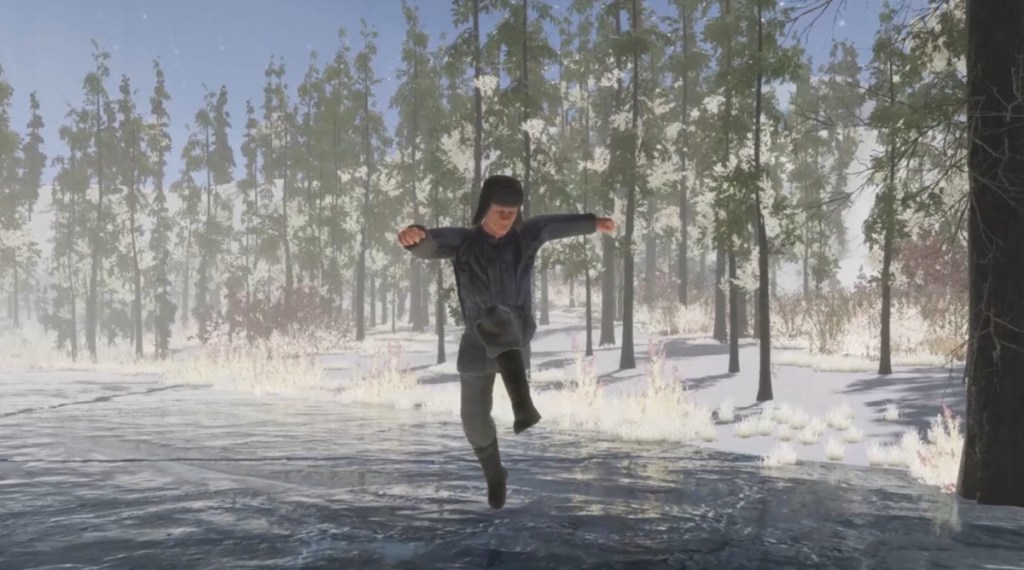Latent Technology raises $8M to change animation with generative physics

Latent Technology, a game technology company focused on AI-driven physical animation, has closed an $8 million seed funding round.
Founded in 2022 in London, Latent Technology provides developers with new workflows to create emergent, real-time animation behaviors with minimal input.
While most video game animations today rely on pre-defined movement sequences – limiting real-time interactivity and failing to respond dynamically to the evolving game environment – Latent’s breakthrough, Generative Physics Animation, challenges this convention. By combining neural networks and physics, it enables characters to move and respond dynamically, in real time, said Jorge del Val, co-founder and CEO of Latent Technology, in an interview with GamesBeat.
“We’re creating the engine that will enable developers based on a foundation model, but it’s a foundation model for the kind of technology that we are doing, which we call a generative physics animation,” del Val said. “It’s not the same foundation model as an LLM. We are calling it Phoenix, and it will be the most advanced foundation model when it comes out.”
AlbionVC and Spark Capital co-led the round, which also saw participation from Root Ventures and Alumni Ventures, marks a significant milestone as the company prepares to scale its breakthrough animation technology.
Latent said the challenge of doing physics right is becoming more urgent as game development costs rise sharply. Budgets for triple-A games have increased significantly, with projections indicating an 8% CAGR through 2028, outpacing revenue growth and putting pressure on studios to deliver high-quality, cost-efficient games.
Latent’s technology is built on Phoenix, the company’s proprietary generative physics animation model currently under development. Unlike manually crafted or pre-rendered animations, the system enables autonomous behaviors that respond to the environment in real time.

“I’ve never been a big fan of incremental innovation when you make the same thing a bit cheaper or more efficient. I’ve always liked more the things that give you fundamentally different experiences,” said del Val.
This creates a new foundation for interactive experiences, where characters and environments react dynamically to player input and evolving gameplay conditions instead of following pre-scripted sequences.
“AI gives us the opportunity to transform not only how developers create games, but also how players experience them,” said del Val. “While many companies are using AI to optimize existing workflows, we’re focused on enabling something fundamentally new – emergent, interactive animation that reacts in real time. Our aim is to evolve the animation paradigm towards emergent physical behaviors, opening up new, creative possibilities for developers and dynamic experiences for players.”
The new investment will support the continued development of Latent’s technology, particularly the Latent Behaviour Engine. This product is designed to enable developers to seamlessly define and deploy emergent behaviors based on generative physics in their games. Latent is currently running a closed beta with select studios and plans to release two additional tech demos later this year to showcase the technology in action and further refine its tools.
Del Val said, “Our technology allows us to prototype rapidly while delivering experiences that were not possible before. We aim to stay close to the development workflow by shipping real, playable demos that showcase our technology in action.”
Sebastian Hunte, an investor AlbionVC, said in a statement: “Latent’s technology positions it to become core infrastructure for the future of game development—powering next-gen interactive experiences through real-time, generative animation. Just as LLMs have revolutionized content creation, Latent is laying the foundation for a similar leap in animation. With strong early traction and a deeply technical team, we’re thrilled to support their journey.”
Latent Technology was named as a Game Changer last year at GamesBeat Next 2024.
“The past two years has been about implementing the technology and proving that it works in a real setting, for example, in a game engine,” said del Val. “We made a proof of concept, and we proved that it worked. Now we need to scale the technology and create a product to enable developers to create emergent physical behaviors. This new round will fund that effort.”
Del Val said a few design partners have tried out the technology. The company will provide authoring capabilities so developers can create anything that want.
“The idea is that anybody could, instead of crafting pre-baked animations, with just a few directives, craft an actual emergent physical behavior that then they can deploy instantly to the game and play with it directly,” del Val said. “All of the process and a huge barrier would be eliminated, but the result would be an experience which is emergent, which also offers new possibilities for actual players, for them to feel something different when they’re interacting with characters in real time, as if they’re alive.”
The team has six people, and del Val hopes to double the number by the end of the year. The money will go toward tech and product development. The team is working on a hybrid remote model.
“We are a very lean team, and I’m proud to say that every hire for us is a key hire,” del Val said. “We have a prototyping team as well, constantly dogfooding the technology. We have a few prototypes in the works that we plan to ship. Those will be more like tech demos rather than actual games, whose purpose is to showcase the technology.”
With the tech, game developers will enable objects and characters to interact in real time, where there are no pre-baked animations.
“We are achieving very lifelike and natural interactions, and we want to take this to the next level,” del Val said. “By default, the characters created with the behavior engine will be fully interactive and and natural looking, and you will be able to interact with them. All of this is enabled by by our foundation model.”



